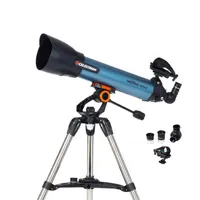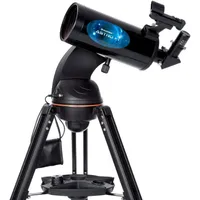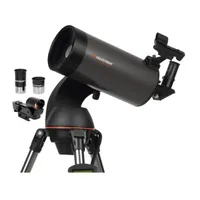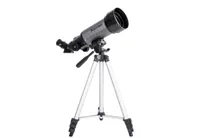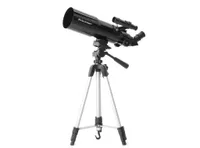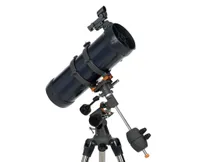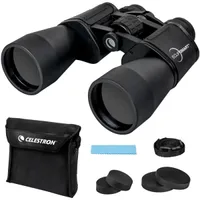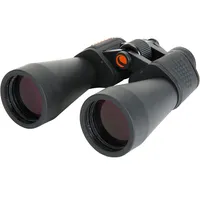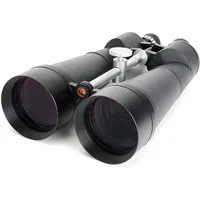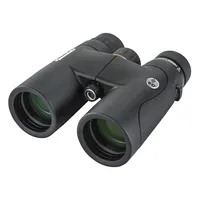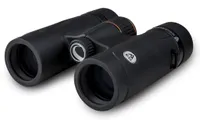Celestron telescope & binocular deals 2025: Save big this holiday season
The biggest and best Celestron telescope and binocular deals with huge savings over the holidays.
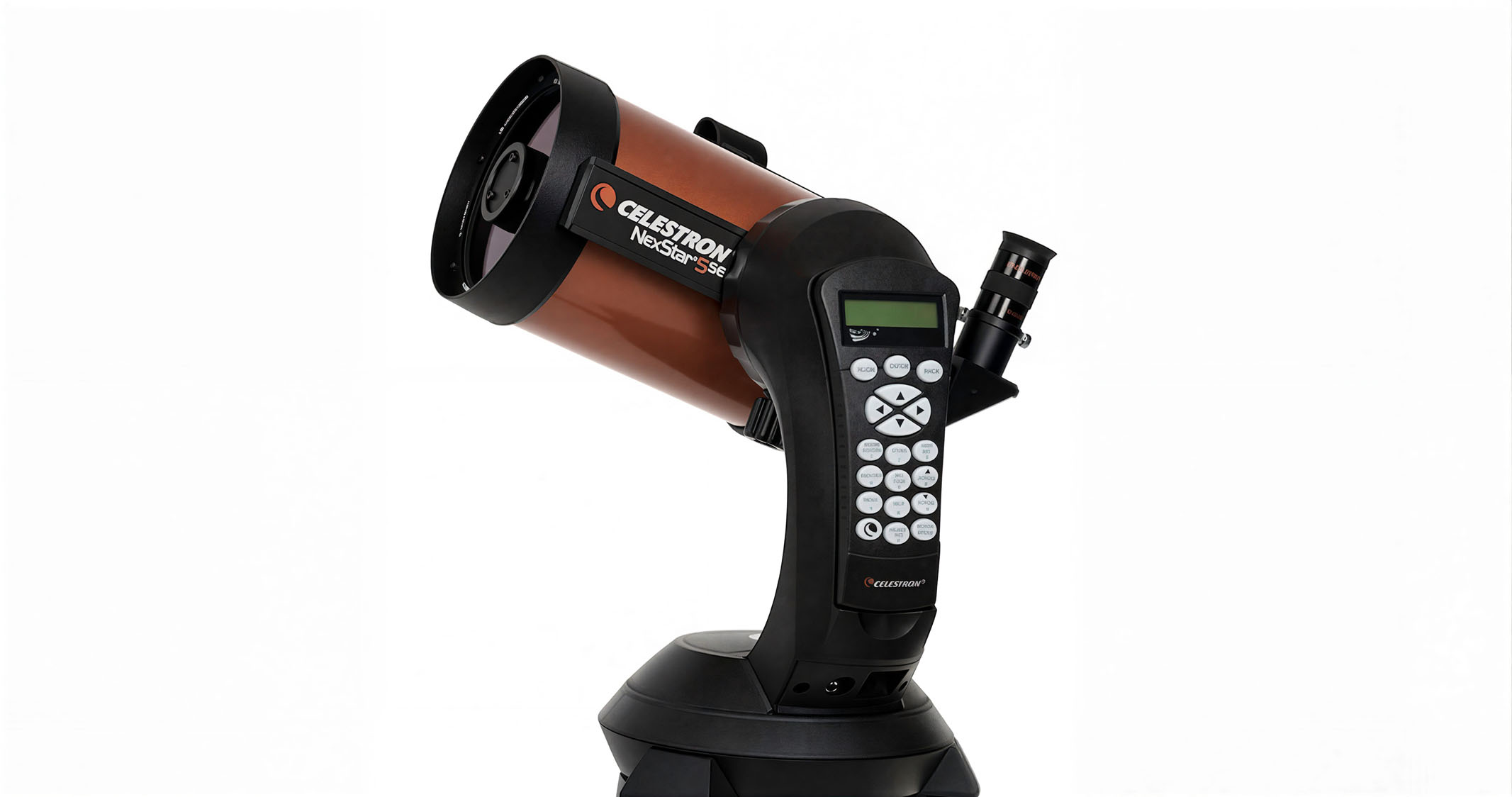
Celestron is a trusted brand producing some of the best telescopes and binoculars. From beginner-friendly telescopes to advanced models, Celestron has something for everyone.
With that in mind, we've hunted down the best Celestron telescope and binocular deals. You can save serious money on stargazing, nature watching and more with these deals. This guide is kept updated throughout the year to make sure we've always got the latest deals.
- Find further savings on telescopes at Walmart
- Discover further discounts on telescopes on Amazon
- Discounts and deals on telescopes at Best Buy
The best Celestron telescope & binocular 2025
Best Celestron telescope deals
Read moreRead less▼
Save $40 on what we think is the best budget telescope out there. It's a great option for budding astronomers to get up and running quickly and easily and you can check out our Celestron Inspire 100AZ review for a closer look.
Read moreRead less▼
Save $240 on a telescope that offers the most value to enthusiasts. You can read more about it in our in-depth review and you can level up this scope with a couple of upgrades, too.
Note: The before price has spiked to make it look like a bigger deal than it really is but the price you pay is still decent.
Read moreRead less▼
Save $110 on an excellent computerized telescope that features a large 130mm aperture, a database of over 4,000 nebulas, stars and galaxies, two eyepieces, an accessory tray, a tripod and a finderscope. It also comes with a two-year warranty and a free download of astronomy software.
Note: Make sure you click the apply coupon box for the full saving.
Read moreRead less▼
Save $52 on the Celestron Travel Scope 70 at Amazon. Complete with two eyepieces (20mm and 10mm), 2x Barlow lens, star diagonal, backpack, finder scope, moon filter, tripod and smartphone adapter, this grab-and-go telescope offers a fully equipped option for beginners and kids.
Note: Make sure you click on the apply coupon box for the full discount.
Read moreRead less▼
At $20 off, the Celestron Travel Scope 50 is suitable for observers on the move. In our review of the Celestron Travel Scope 50, we awarded it four stars. The 50 mm aperture provides crystal clear views of a selection of night sky targets, such as the rugged lunar surface as well as terrestrial daytime sights, like wildlife and terrain.
Read moreRead less▼
Save $87 at Amazon on the Celestron AstroMaster 114EQ, which allows you to enjoy clear, high-definition views through its 114mm aperture. Equipped with filters, eyepieces, StarPointer finderscope, cleaning cloths and more, this reflector is suitable for enthusiast astronomers.
Choosing the right telescope
There are some serious deals here, but before you take the plunge it's important to consider not just your budget but also your level of stargazing experience. Given the number of models on offer, there's a Celestron telescope to suit everyone.
It doesn't matter if you're a complete beginner or whether you're looking to bag a bargain or invest some serious cash, you can find a Celestron telescope to cater to your needs. But which one is the right one? We've got you covered.
Beginners are advised to go for a portable easy-to-assemble telescope at an introductory price of less than or around $200 but, there are top beginner options that cost more too.
The Celestron AstroMaster LT 70AZ or Celestron PowerSeeker 50AZ are good low-cost, starter models. The Celestron AstroMaster 114EQ, Celestron StarSense Explorer LT 114AZ or Celestron AstroMaster DX 102AZ will cost a bit more, if you're planning on sticking with stargazing, it's worth the investment. Or if you're buying for children and suspect their interest could be a flash in the pan, the robust Celestron FirstScope 76 is an excellent choice.
More serious astronomers should be prepared to make a larger investment. If you’re in the latter position, then we recommend the Celestron NexStar 8SE to add to your arsenal. But that's not the only reason to spend more on a telescope.
With an increase in budget, comes an improvement in the type of technology that has become prevalent in telescope manufacturing: computerized, or GoTo, mounts. Some astronomers may frown on this but, at the touch of a button, these revolutionary instruments are able to slew to your chosen target without needing to use sky maps to find your way around the night sky. The Celestron NexStar 4SE is a great option if you're keen on combining tech with your observing sessions.
The models we've mentioned are perfect for views of the solar system, with notable targets being the craters and seas of the moon and the bright sights of Jupiter and Saturn. They will also provide good observations of bright deep-sky objects such as the Orion Nebula in the constellation of Orion (the Hunter) and the stunning Pleiades star cluster in Taurus (the Bull).
For even more magnified views of the planets, galaxies and nebulas, the Celestron AstroMaster 114EQ, Celestron StarSense Explorer LT 114AZ and Celestron NexStar 4SE, with their increased light gathering abilities, are well worth investigating.
Best Celestron binocular deals
Read moreRead less▼
Get a great price and save $96 on a pair of solar binoculars that feature a 12x magnification, a 50mm aperture and solar filters. It means these binoculars allow you to view the sun safely and their power helps them excel at spotting sun spots.
Note: The before price appears to have been spiked, to make this appear like an even better deal, but this still an excellent price for these binos.
Read moreRead less▼
Save $37 on a pair of binoculars that excel in low light and are just as handy for daytime observation. In our review of the Celestron Skymaster 12x60 binoculars, we praised their build, quality spectacle-friendly features and value for money. They're even better value at this price.
Note: Make sure you tick the coupon box to get them at this price.
Read moreRead less▼
Save $80 on these top-rated Celestron Nature DX 12x56 binoculars. With their 12x magnification and 56mm objective lenses mean equally suited to skygazing or nature watching. They're waterproof and robust, with a rubberized body, making them ideal for all weather use.
Read moreRead less▼
Save $140 on these Celestron SkyMaster 25x100 binoculars, which are a serious bit of stargazing gear. In fact, we think they're the best binoculars for magnification. For your money, you get a rubber-armored, waterproof binocular with Bak-4 prisms, a 100mm aperture and a 25x magnification. This comes with a lens cloth, a carry case, a carry strap, a manual and lens caps.
Note: To get the full reduced price, make sure you tick the coupon
Read moreRead less▼
These binoculars are $30 off and come with high-quality BaK-4 prisms and a large objective diameter to provide excellent views of a wide selection of targets. The Celestron SkyMaster 20x80 Astro Binoculars are ideal for wide-angle sights of star clusters, planets, the moon, diffuse nebulas a selection of galaxies.
Note: Make sure you tick the coupon box to get the lowest price.
Read moreRead less▼
Save $64 on a these beginner-friendly binoculars, suitable for stargazing, birdwatching and more more. Their ED lenses help eliminate optical defects, and we think they're one of the best beginner-friendly binoculars you can buy.
Read moreRead less▼
Save $85 on these Celestron TrailSeeker ED 10x32 compact binoculars. They may be small but pack a punch in observing prowess. These TrailSeekers are great for any outdoor adventure — from studying birds to observing the craters of the moon. They're also a great option for magnified views of star fields.
Note: Stock is low, so you'll have to act soon to get this deal.
Edit: These binoculars are now even cheaper, reduced from $286 to $265, saving you $85.
Choosing the right binocular
We recommend looking for at least a magnification of 7x or 10x, along with an aperture of at least 42 mm when you're buying your Celestron binoculars. You should also choose a Porro prism design, while fully multi-coated optics and BaK-4 prisms are a must for crisp and clear observations. Nitrogen-purged designs are a massive plus and keep fogging and condensation at bay during your tours of the universe.
You should bear in mind, however, that as your objective lens size increases, so does the weight of your binoculars. Anything larger than 50 mm will require a tripod for stable skywatching. It's not just that you have to lift them, you also need to keep them stable, which can be quite a strain on your arms.
If portability is your main aim and you're looking to use your binoculars for a combination of travel, skywatching and terrestrial views, we recommend the Celestron Outland X 10x42, which will give you more bang for your buck.
The Celestron Outland X 10x50 is also a great option and is comfortable to use for reasonably long periods of time. Observations of nebulas such as the Orion Nebula (Messier 42) and Andromeda Galaxy (Messier 31) are even better with the larger objectives.
Alternatively, if you're looking for a cost-effective way to gather as much light as possible, the Celestron 20x80 SkyMaster Pro is a great choice. As discussed above, we recommend a tripod for a comfortable and effortless viewing experience. But it does offer crystal clear observations and eye relief for those who wear spectacles.
Breaking space news, the latest updates on rocket launches, skywatching events and more!

Gemma currently works for the European Space Agency on content, communications and outreach, and was formerly the content director of Space.com, Live Science, science and space magazines How It Works and All About Space, history magazines All About History and History of War as well as Science, Technology, Engineering, Arts and Mathematics (STEAM) kids education brand Future Genius. She is the author of several books including "Quantum Physics in Minutes", "Haynes Owners’ Workshop Manual to the Large Hadron Collider" and "Haynes Owners’ Workshop Manual to the Milky Way". She holds a degree in physical sciences, a Master’s in astrophysics and a PhD in computational astrophysics. She was elected as a fellow of the Royal Astronomical Society in 2011. Previously, she worked for Nature's journal, Scientific Reports, and created scientific industry reports for the Institute of Physics and the British Antarctic Survey. She has covered stories and features for publications such as Physics World, Astronomy Now and Astrobiology Magazine.
- Chris McMullenContributing Writer
- Alexander CoxE-commerce Staff Writer
You must confirm your public display name before commenting
Please logout and then login again, you will then be prompted to enter your display name.
